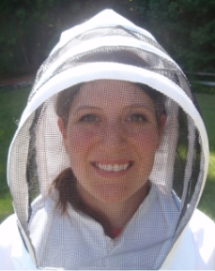Well it wouldn’t be January without a nod to some resolutions for this year. I have probably mentioned this before, but I try to make concrete commitments for the new year. For example instead of “work out more” I say “do yoga twice a week”; instead of “eat healthy” I say “eat vegetarian two days a week” and instead of “lose more sleep” I say “post a blog entry once a week”. Well I have one category this year that is throwing me for a loop. I’d like to reduce our family’s environmental impact this year and Will said he would help me achieve that goal. The problem is, it’s too darn vague. Lately I have been thinking about reducing our waste (both trash and recycling) and started looking into ways to do this. Since we already compost and recycle everything we can (above and beyond curb side recycling), I think the best way to create less waste is to buy less packaging.
Our biggest sources of waste (recycling, compost or trash) are from online shopping and food packaging from the grocery store. Online shopping I can limit. I’ll start condensing packages from Amazon and limiting my orders to monthly. Or maybe I can have other friends go in on orders with me or something. That one doesn’t seem that hard. Food packaging is so much more difficult because of this little thing called the Department of Public Health (DPH). First I tried locating what west coasters refer to as “package free stores”. I was shocked to find that there is a strange dirth of these, not only around us in rural MA, but also in the more crunchy parts around Boston. So instead, Will & I tried at multiple grocery stores to purchase bulk food using our own containers. We were met with resistance due to employees not knowing if this was considered sanitary by the DPH. Made me happy they are actively thinking about this – but frustrated for the environment!
I was still not twarted! I decided to contact the DPH myself and find out the deal. They responded VERY PROMPTLY with a link to the code governing retail food establishments and some key passages: https://www.mass.gov/files/documents/2019/01/04/Merged-Food-Code-11-16-18.pdf. The bottom line? Reusable cups provided by the customer are okay for beverages in certain circumstances, but reusable containers provided by the customer are never okay for food*. Wow. No wonder there are almost no BYO bag “package free stores” in Massachusetts – they are basically illegal! On top of that, most food has to be completely covered in plastic to be sell-able. I thought there might be contingencies for dry food like rice or beans, but the only exclusion I found is that there is no need for packaging for “nuts in the shell and whole, raw fruits and vegetables that are intended for hulling, peeling, or washing by the CONSUMER before consumption”. Well there goes my plan. Maybe I misread something? To be continued… (I hope.)
Don’t let this stop your waste reduction though fellow Massholes! There are still lots of ways you can make a difference. For example I gave out reusable bamboo forks, knives and spoons as gifts this year. Like me, my friends bring their lunch a lot of the time and frequently consume items that require silverware. Most of the time this means using a disposable fork or spoon from the cafe. Even if we save 50 forks from the landfill over a year per person I will be delighted.
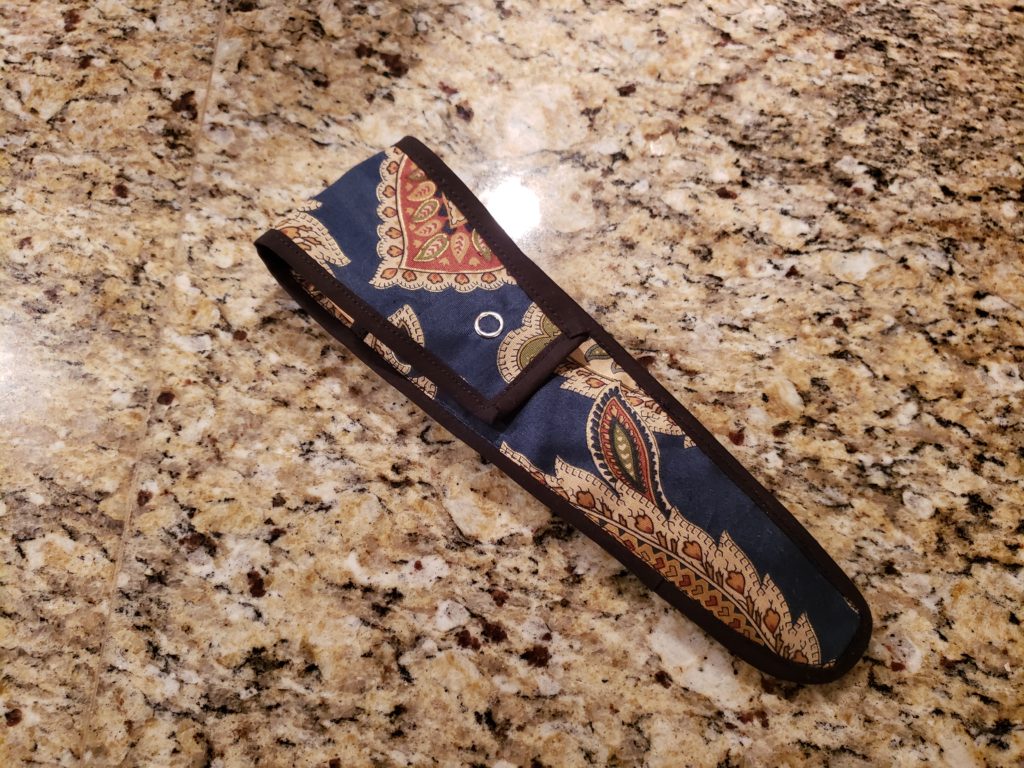
My homemade Christmas gift this year.
Plus this gift is so economical I could give myself a present! I have a set in my lunch bag for daily use and in my pocket book for just in case. Each utensil can be purchased for $1.20 a piece and the pattern for the holder is below. I hope this will inspire you to make your own little changes to help save the planet.
*from section 3-304.17 entitled “Refilling Returnables”
Reusable Utensil Holder
What you’ll need:
- Either:
- Heavyweight scrap fabric such as denim, upholstery weight velvet, canvas etc.
- Lightweight scrap fabric to be used as contrast/lining
- Or:
- Medium weight scrap fabric
- Single fold bias tape .5″ wide
- Size 16 dritz snap
- Pattern here
- Cut out pattern pieces as directed.
- Pin lining fabric to outer fabric for both pieces.
- Along the flat surface of the pocket fabric, open out the bias tape and place along the unfinished edge, outer fabric to right side of bias tape, pining along the bias tape fold line. Stitch along the fold line. Fold bias tape over unfinished edge, pin in place and stitch close to the first set of stitching, enclosing the entire edge.
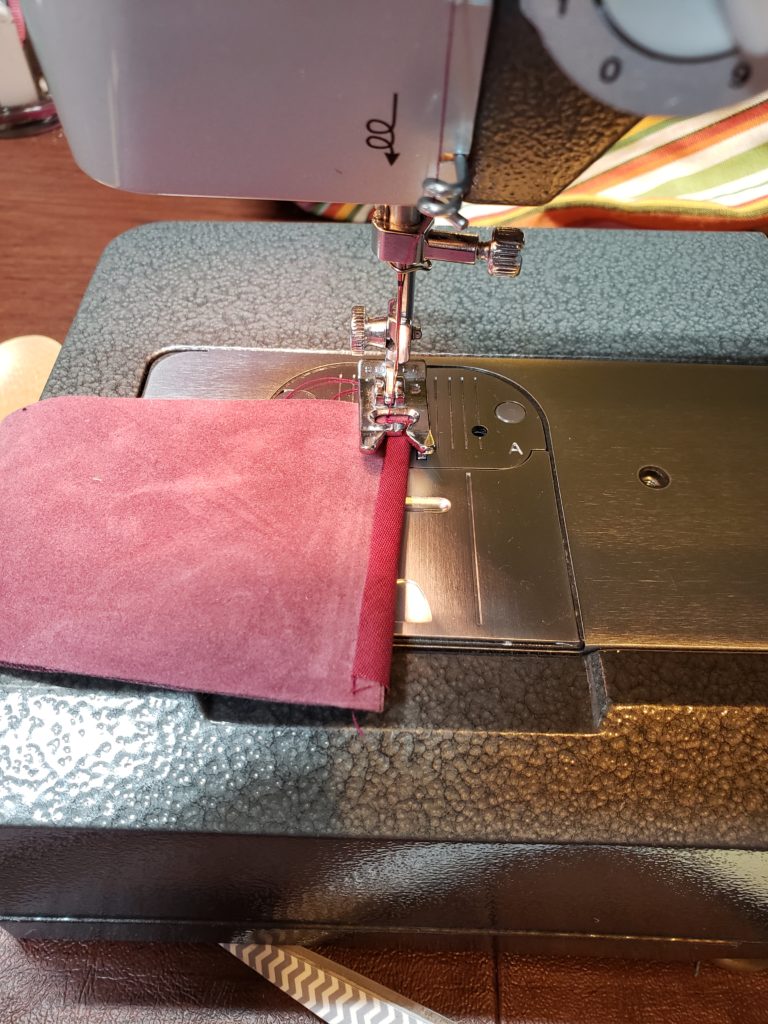
- Lay pocket on top of backing, with lining material on the inside. (Match the marks on the backing with the top of the pocket.)
- Open out bias tape as you did in step 3 with the fold 1/2″ from the edge, with unfinished edges parallel to one another. Fold over the starting edge of the bias tape so the seam looks finished. Pin all around the perimeter in this fashion, overlapping the start of the tape by half an inch.
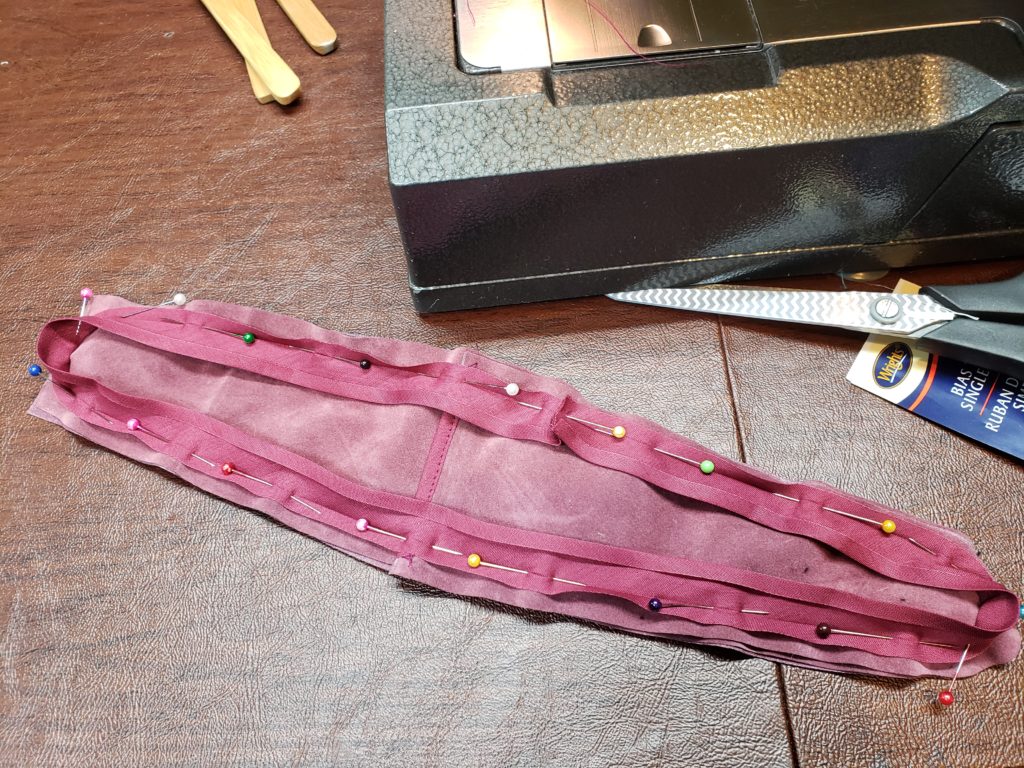
- Stitch.
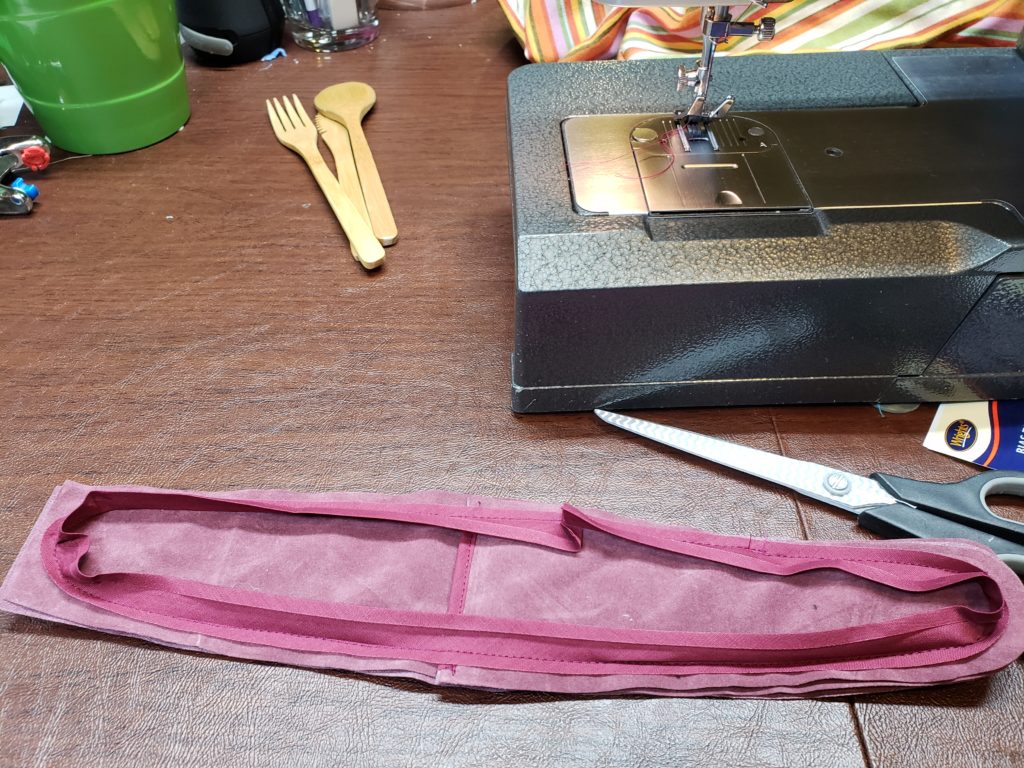
- Trim the seam to match the unfinished edge of the bias tape then fold the bias tape over the unfinished edge, pin in place and stitch close to the first set of stitching, enclosing the entire edge.
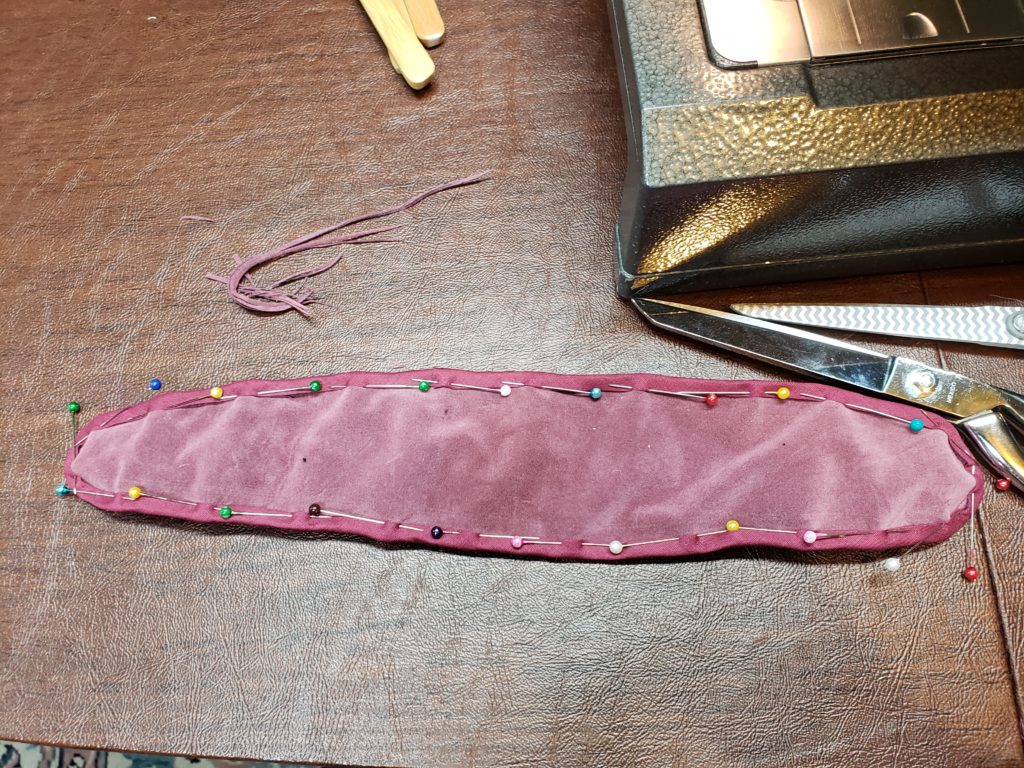
- Insert utensils into pouch and fold flap down over them so it holds utensils in snuggly. Mark location for snap.
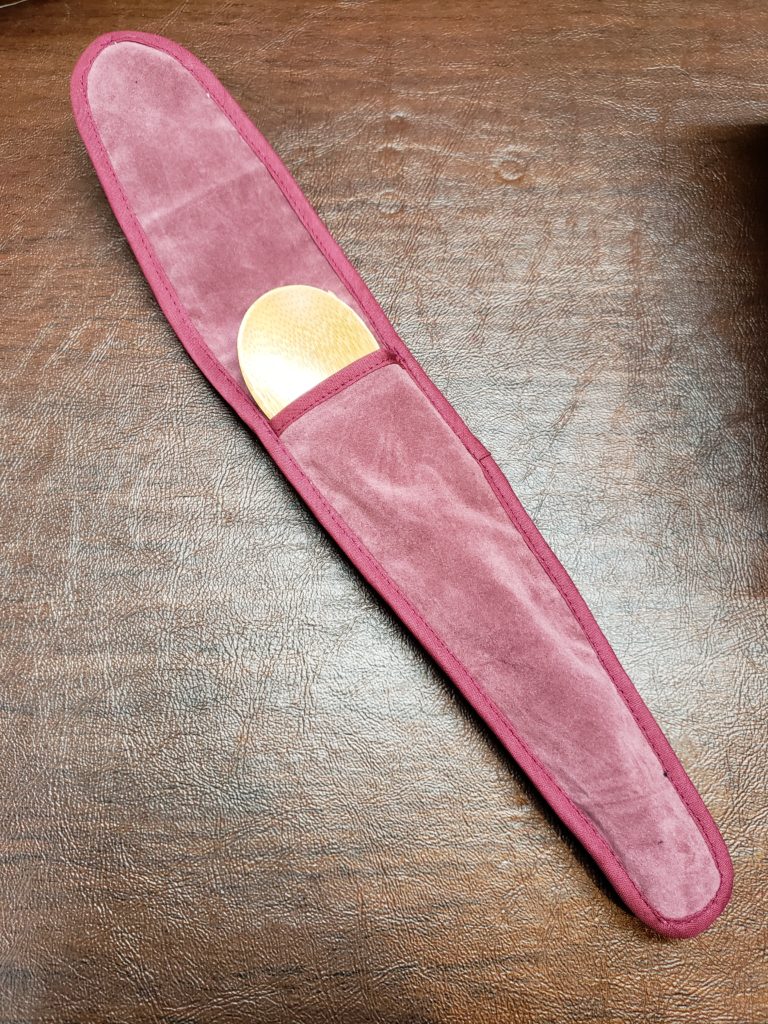
- Insert snap following manufacturer’s instructions with the male end on the pocket and female end on the back of the flap so it will snap together when the flap is closed.
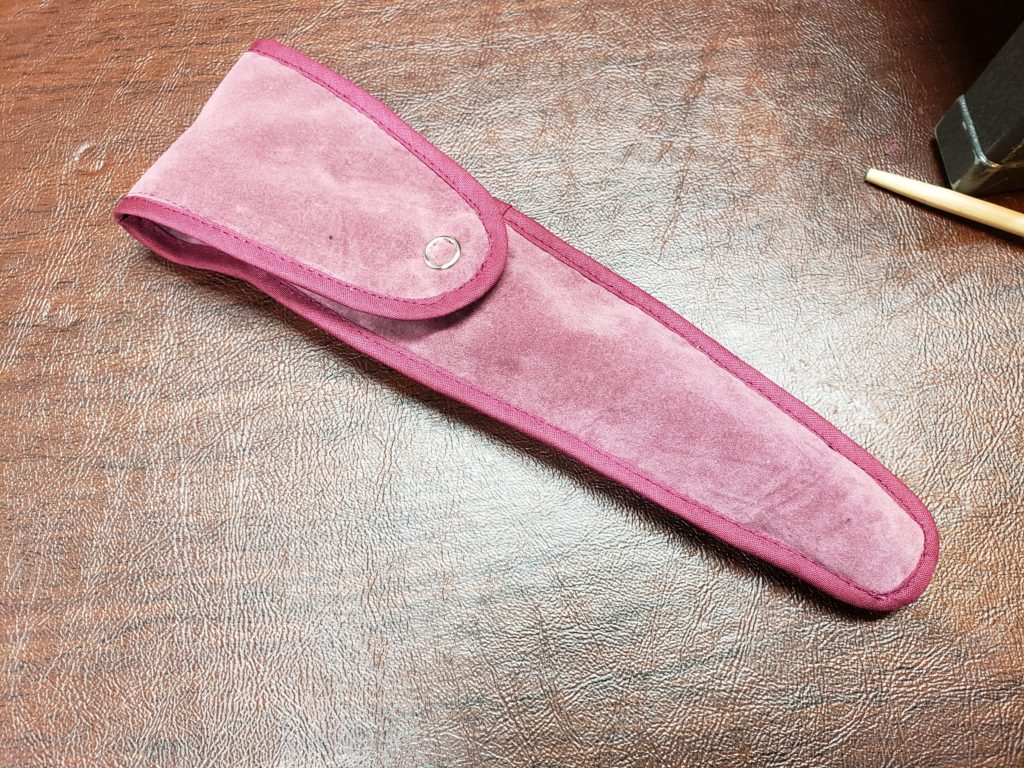
- Toss in your lunch bag and save the planet!
You may notice I have both a rounded flap and a pointed flap – I included both shapes in the pattern, just choose which you want when adding the bias tape.

